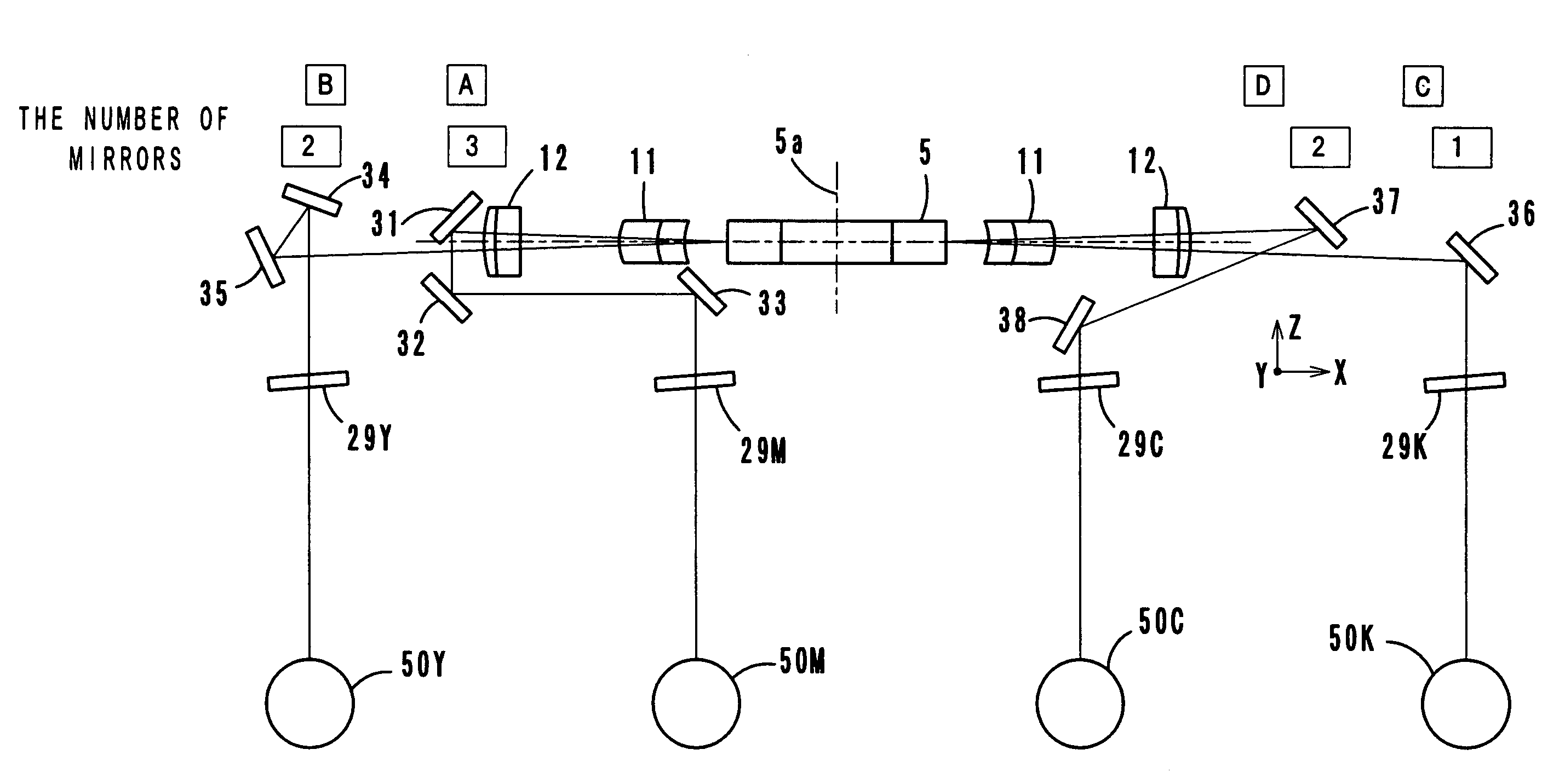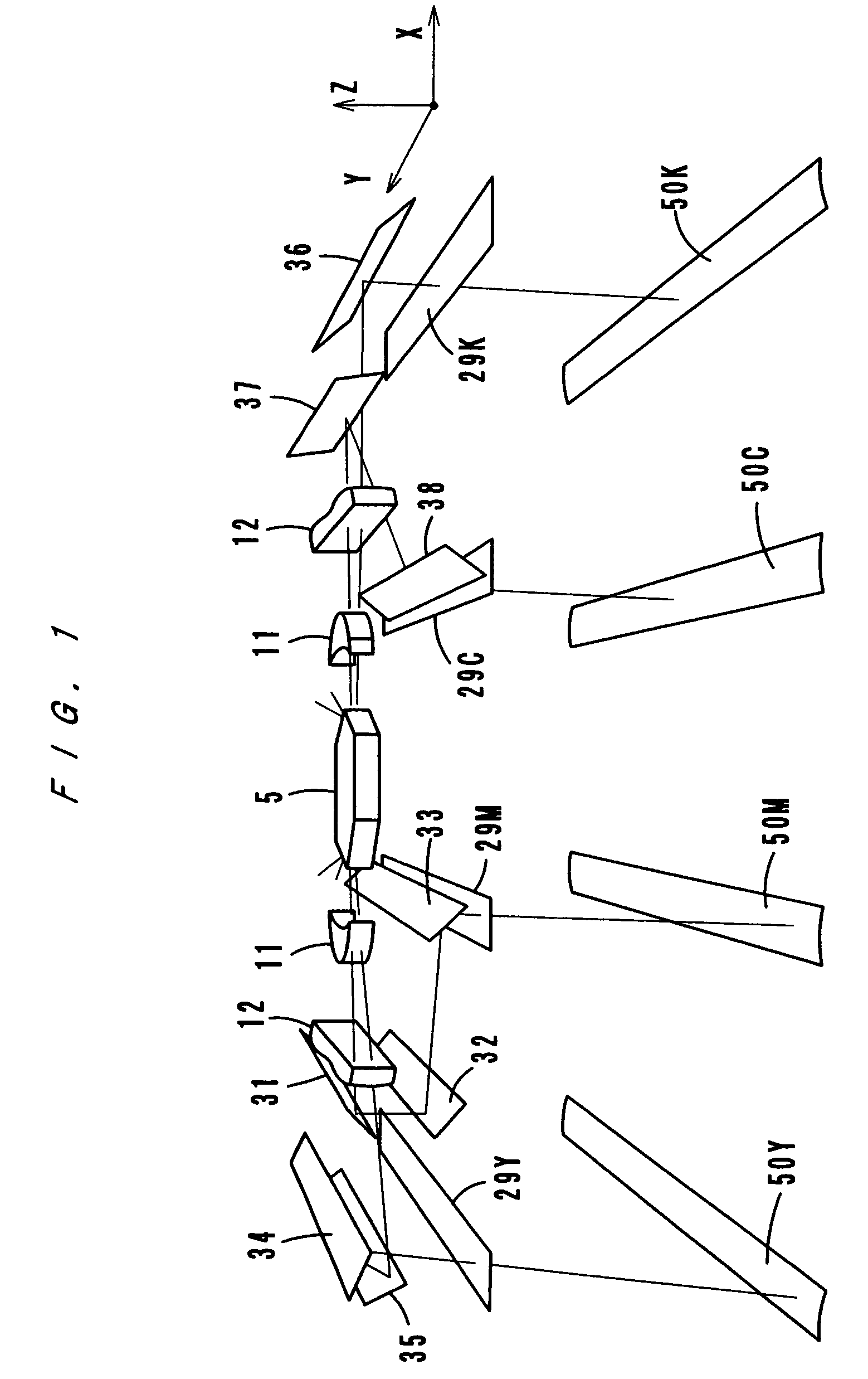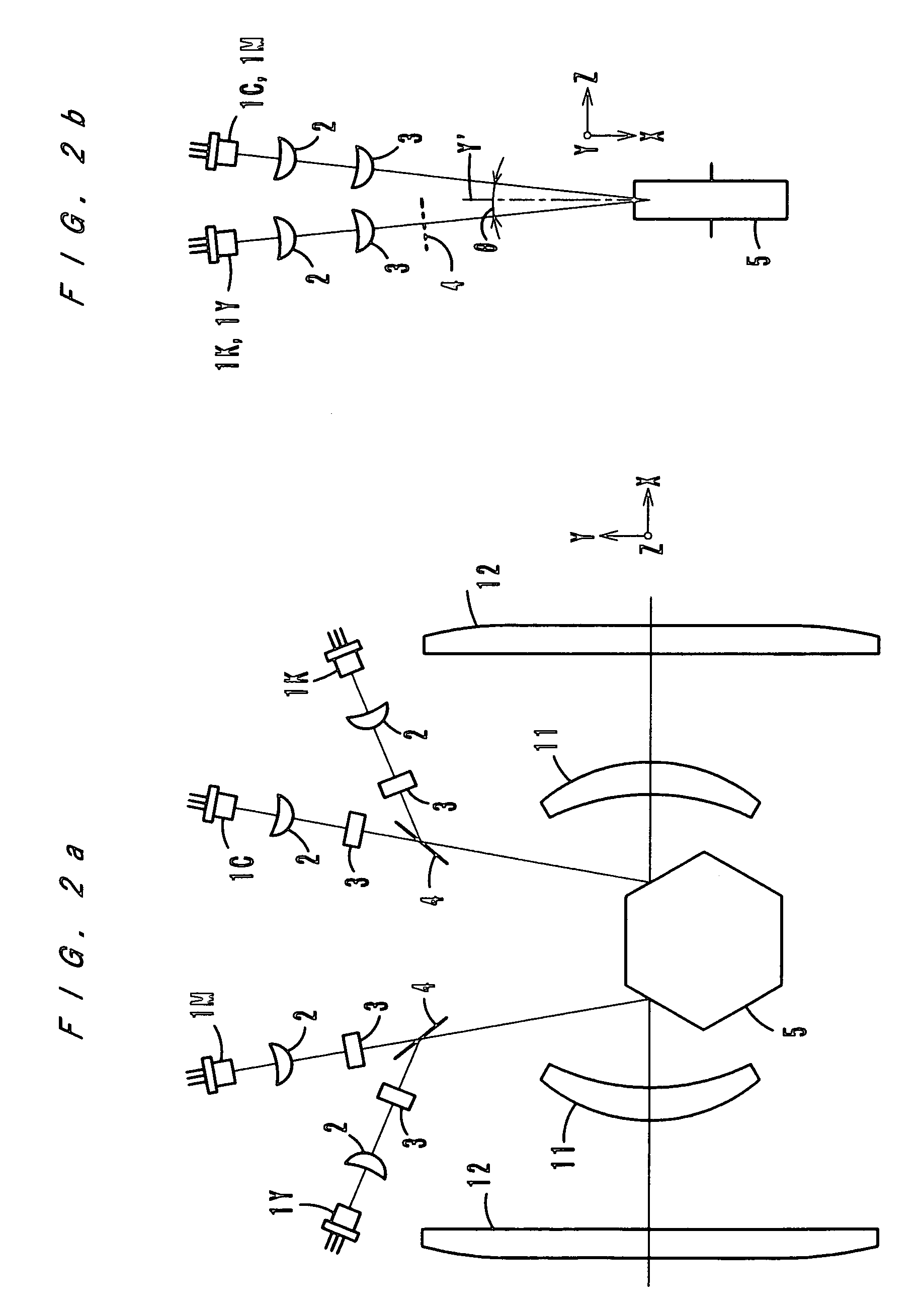Optical scanning apparatus
a scanning apparatus and optical technology, applied in the field of optical scanning apparatus, can solve the problems of expensive apparatus, poor beam performance, heavy beam, etc., and achieve the effect of not increasing the thickness of the deflector
- Summary
- Abstract
- Description
- Claims
- Application Information
AI Technical Summary
Benefits of technology
Problems solved by technology
Method used
Image
Examples
first and second embodiments
; See FIGS. 1–4
[0032]FIGS. 1–3 show an optical scanning apparatus according to a first embodiment of the present invention. FIG. 1 shows arrangement of elements three-dimensionally and conceptually, and FIG. 2 shows an optical path between a light source and a deflector. FIG. 3 is a sectional view in a sub-scanning direction. FIG. 4 is a sectional view taken in a sub-scanning direction of an optical scanning apparatus according to a second embodiment of the present invention.
first embodiment
[0033]The optical scanning apparatus is structured as an exposure scanning unit of an electrophotographic image forming apparatus of a tandem type, and as FIG. 3 shows, the optical scanning apparatus forms images for yellow, magenta, cyan and black respectively on four photosensitive drums 50 (50Y, 50M, 50C and 50K). The images (electrostatic latent images) formed on the photosensitive drums 50 are developed into toner images. Thereafter, the toner images are transferred onto an intermediate transfer belt and combined thereon with each other (first transfer). Then, the composite image is transferred onto a recording member (second transfer). This image forming process is well known, and a description thereof is omitted.
[0034]As FIGS. 2a and 2b show, the optical scanning apparatus has four light source units, each of which comprises a laser diode 1, a collimator lens 2 and a cylindrical lens 3, arranged respectively in the right upper side, in the right lower side, in the left upper...
second embodiment
[0041] regarding the number of diverting mirrors 41 through 46, as FIG. 4 shows, the number A of mirrors located in the upper optical path at one side (in the optical path for yellow) is one, and the number B of mirrors located in the lower optical path at the same side (in the optical path for magenta) is two. The number C of mirrors located in the upper optical path at the other side (in the optical path for black) is one, and the number D of mirrors located in the upper optical path at the same side (in the optical path for cyan) is two.
[0042]Thus, in the left side of the polygon mirror 5, the number A of diverting mirrors located in the upper optical path and the number B of diverting mirrors located in the lower optical path are one and two respectively, that is, an odd number and an even number. In the right side of the polygon mirror 5, the number C of diverting mirrors located in the upper optical path and the number D of diverting mirrors located in the lower optical path a...
PUM
 Login to View More
Login to View More Abstract
Description
Claims
Application Information
 Login to View More
Login to View More - R&D
- Intellectual Property
- Life Sciences
- Materials
- Tech Scout
- Unparalleled Data Quality
- Higher Quality Content
- 60% Fewer Hallucinations
Browse by: Latest US Patents, China's latest patents, Technical Efficacy Thesaurus, Application Domain, Technology Topic, Popular Technical Reports.
© 2025 PatSnap. All rights reserved.Legal|Privacy policy|Modern Slavery Act Transparency Statement|Sitemap|About US| Contact US: help@patsnap.com



